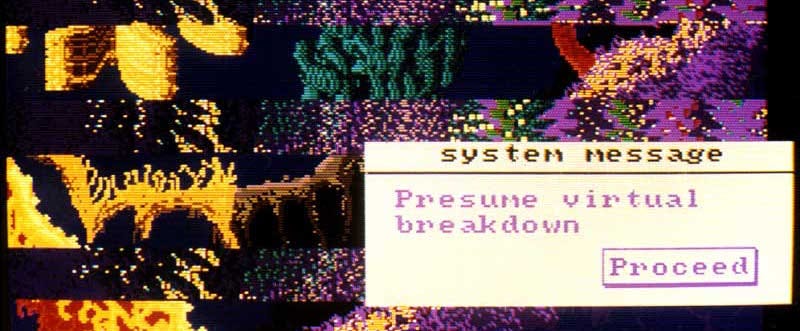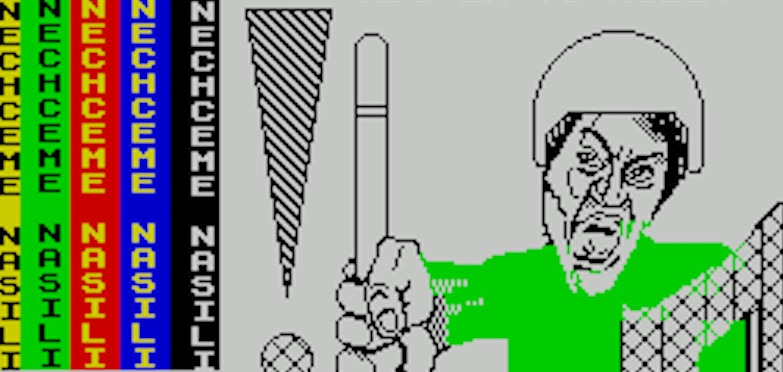
Featured Blog | This community-written post highlights the best of what the game industry has to offer. Read more like it on the Game Developer Blogs or learn how to Submit Your Own Blog Post
Em Reed's 'All Time Greats' article/video picks
Writer & cultural commentator Em Reed contributes some really interesting links that straddle history, art, academia and culture adeptly.

[Time for our fourth Video Game Deep Cuts guest post, following Kyle Orland’s, Bennett Foddy’s and Brandon Sheffield’s ‘best ever game article/video’ picks. This time, writer & cultural commentator Em Reed contributes some really interesting links that straddle history, art, academia and culture adeptly.
Em has recently written for Rock Paper Shotgun and EGM, and I really enjoy her sensibility and point of view - for example, this Speculation Jam piece on what game preservation could be like in 2024, or indeed her picks for the ‘20 games to remember’ for the past decade. Take it away, Em…]

It’s hard to decide the “best-ever” anything, especially writing. Assembling this list was a good chance for me to think back over my experience writing about games from around 2013, and an even longer-standing interest in them.
These pieces are all well-written and interesting, that should go without saying. But to really narrow down the field I decided to focus on ones that also expanded my perspective and had a lasting influence on my own writing practice.
Rhizome: Towards an Art History for Videogames (Lana Polansky, 2016 )
This is an article that always jumps to mind when I think of really important, formative work. Lana Polansky has gone on to do amazing critiques of the game industry and its labor practices, and has even started a Twitch channel which features lesser-known, experimental games.
But this one sticks with me because of how it upends the standard narrative of “art games” and instead widens the field to include some fascinating aesthetically and conceptually ambitious work from across gaming history.
The Arcade Review: Anyhowly Anyhow (Krish Raghav, 2014)

Remember when everyone was making custom versions of 2048? I like teaching this article alongside Nick Montfort’s “Combat in Context” because it is a deep read on a videogame that is far from the first thing to come to mind when you ask people to think about videogames.
This article explores the mechanics of the game PAP 2048, as well as the platforms which enabled its creation and distribution alongside the political and cultural context of Singapore masterfully illustrates the variety of elements effecting a game’s reception and meaning.
Real Life: Well Played (Vicky Osterweil, 2018)
Despite being a recreational activity, videogames’ technological nature and the effort they often demand can make them feel a lot like the technologically-mediated work many of us already spend a lot of time doing. This article, and the subsequent instalments of Vicky Osterweil’s work on this site, don’t avoid this contradiction, tracing it across topics like the gaming industry, game design, and live streaming.
ZEAL: Playing Love Live: School Idol Festival Or: My Perverted Image-Object Commodity Fetish (Helen Stefanie, 2019)

I both love and see myself in this charmingly personal comic that still incorporates an insightful analysis of not only the mechanics of gacha games, but why so many people are so attached to them. If you’re baffled as to why Fate/Grand Order was the most discussed game on Twitter of 2019 (really!) then read this.
Eurogamer: Shooters: How Videogames Fund Arms Manufacturers (Simon Parkin, 2013)
This piece sticks with me because it evaluates the issue of videogames and representation of gun violence from an alternative angle that does not rely on psychological speculation one way or the other. Instead, Simon Parkin literally follows the money, examining how the intersection of high-quality digital gun models and official licences from firearm brands are seen as a marketing opportunity for videogames and weapons manufacturers alike.
Fictional Videogame Stills (Suzanne Treister, 1991-1992)

So this is not really a piece of writing, but I find Suzanne Treister’s evocative Fictional Videogame Stills, made on an Amiga in the early 90s, to capture the imagery and tone of videogames, the mysterious experiences they offered, and the excitement and tension of this new technology.
They’re still extremely inspiring to me. Treister captured these images by photographing the screen of her Amiga, so clicking on the thumbnails also reveals lovely material traces of the CRT monitors of the time.
Slots of Fun, Slots of Trouble: An Archaeology of Arcade Gaming (Erkki Huhtamo, 2005)
This article uses a ton of wonderful historical details to come at videogames from a different angle. Instead of focusing on their relation to other, longer-lived forms of play like sports, boardgames, or make believe, Erkki Huhtamo puts videogames in dialogue with issues of automation and human-machine relationships that emerged over the 19th and early 20th century.
Game Studies: Say it with a Computer Game: Hobby Computer Culture and the Non-entertainment Uses of Homebrew Games in the 1980s Czechoslovakia (Jaroslav Svelch, 2013)

This article is a fascinating look at how videogames come to serve different purposes and are created and distributed in very different ways in an area without an established gaming entertainment industry. It’s a reminder that the history of videogames is much broader than even what we know, and that creativity and expression have always played a role at every level of production.
Everything But the Clouds (Patrick LeMieux, 2017)
While this video essay is primarily about a piece of New Media art, which led to some controversy, it is also a rigorous investigation of the code and structure of the original Super Mario Bros., its related romhacking scene, and Nintendo’s broader cultural influence. You will definitely learn something, either about art or homebrew.
The Time Traveler's Diary: A Year in YU-NO (2017-2018) (Phantom, 2019 - NSFW)
This was a fairly recent read for me, but I still found it incredibly impressive. Combining personal reflections, multiple theoretical perspectives and careful analysis into an inventive format leads to a definitive longform essay about a wildly ambitious game that hardly anyone has played.
However, YU-NO is also an eroge or H-game, and the discussion does not shy away from some of its more controversial and graphic sexual and violent content, so heed the content warnings!
Read more about:
Featured BlogsAbout the Author(s)
You May Also Like







.jpeg?width=700&auto=webp&quality=80&disable=upscale)








